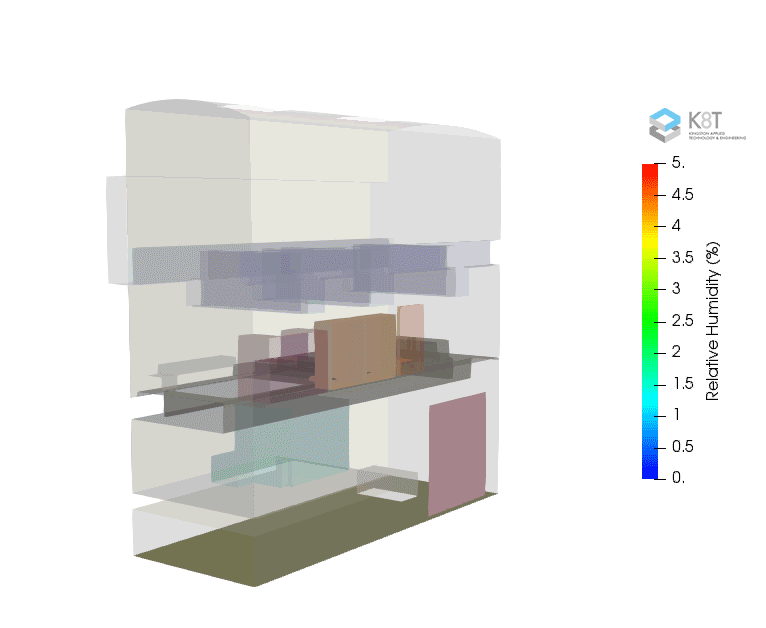
LABORATORY ANALYSIS
LABORATORY ANALYSIS
Laboratories require detailed analysis to asses how ventilation designs can impact the various conditions within a space. From creating pressured clean zones, through to limiting the velocities of air flow within the spaces, Computational Fluid Dynamics (CFD) analysis can provide an insight into the implications the ventilation and room design can have on the criteria of a laboratory space.
TEMPERATURE VARIATIONS
Sensitive equipment and samples require temperatures to remain stable. With Computational Fluid Dynamic (CFD) simulations air paths can be traced to highlight the flow of air from supply and extract vents. Any tempered air being supplied into the space as well as any heat loads that may be present can be simulated along a timeline of events that may occur. The temperature variation throughout can therefore be shown, highlighting any spots of increased heat build up.

AIR FLOW
CHARACTERISTICS
Through modelling the internal room geometry as well as that of the laboratory equipment, the velocities and characteristics of the air flow can be analysed.
Many different scenarios and ventilation set ups can be analysed through using CFD, such as positive pressurisation, which can have an impact on the positioning of grilles and the flow rates supplied.


LABORATORY
RELATIVE HUMIDITY
Within a climate controlled space the Relative Humidity levels are another critical elements that needs to be considered in the design. Moisture in the air can lead to condensation build up within the controlled spaces.
Through analysis of the system, another humidity control and be simulated along with any sources that may impact the space. Through the CFD analysis the system can be evaluated against strict criteria with easily identifiable areas of concern.
ROOMS, LINES AND EVERYTHING IN BETWEEN
Through modelling the internal room geometry as well as that of the laboratory equipment, the velocities and characteristics of the air flow can be analysed that highlight if there are any contamination possibilities at zone boundaries.
Many different scenarios and ventilation set ups can be analysed through using CFD, such as positive pressurisation, which can have an impact on the positioning of grilles and the flow rates supplied. Through evalaution using CFD analysis areas where risk of contamination can be easily identified such as re-circulation or dead zones within the space.

.png)
